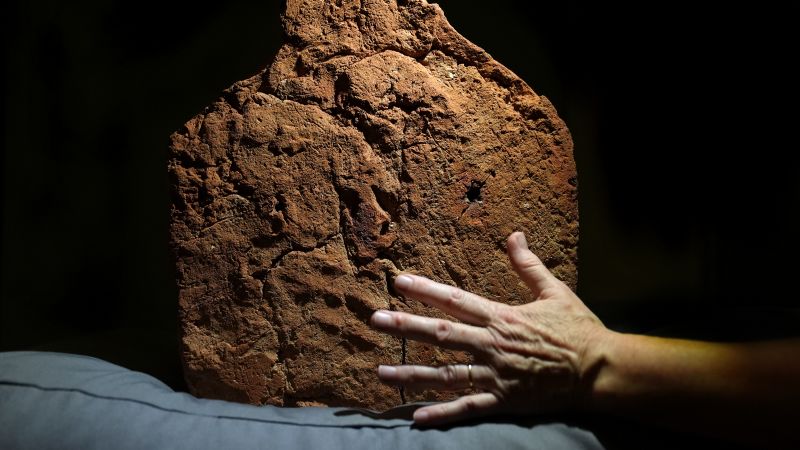A remarkable discovery from Ancient Egypt has recently come to light: a handprint approximately 4,000 years old was found on a clay model intended for offerings within a tomb. This ancient artifact has sparked interest among scholars and historians, providing a rare glimpse into the daily lives and practices of those who lived during that time. The handprint is not merely a mark on clay but a tangible connection to a person long gone, stirring curiosity about their existence and activities.
The Cambridge University’s Fitzwilliam Museum, located in the United Kingdom, was where this intriguing imprint was uncovered. Researchers were in the midst of preparations for an exhibition scheduled to commence this fall when they stumbled upon the ancient handprint. This particular imprint was discovered on the base of a clay model shaped like a building, referred to as a “soul house.” In the context of Ancient Egyptian burial customs, these soul houses served a significant purpose, providing a dwelling for the soul of the deceased.
This artifact, dating back to approximately 2055–1650 BCE, was subjected to extensive examinations, revealing insights into the materials and techniques employed in its creation. The analysis indicates that the potter initially constructed a skeletal framework using wooden sticks, then layered clay over this framework to achieve the desired shape. Following this, the wooden structure would have been obliterated in the firing process, leaving behind only the clay form.
The handprint’s context is particularly fascinating, as it was identified beneath the soul house. The print most likely formed when the potter handled the damp model, prior to its placement in a kiln for firing. Helen Strudwick, a senior Egyptologist at the Fitzwilliam Museum and the curator for the upcoming exhibition, expressed her excitement about the find. She noted the rarity of encountering such a complete handprint on an Egyptian object, stating that it offers a remarkable connection to the individual who crafted it while the clay was still pliable.
Strudwick elaborated on the human aspect of this discovery, emphasizing that the handprint serves as a direct link to the moment of creation. It evokes an image of the artisan gently moving the model from the workshop to allow it to dry before kiln firing. Such personal touches in history often remind us that beyond the grandeur of monuments and artifacts, there are stories of individual creators, each with their own experiences and contributions to the cultural tapestry.
The importance of pottery in Ancient Egypt cannot be overstated, as it played a crucial role in both functional and decorative capacities. Numerous examples of pottery have survived the passage of time, as they were commonly included in tombs as burial goods, often holding food and drink intended for the afterlife. However, while history frequently highlights the accomplishments of well-known figures like the pharaoh Tutankhamun, it often neglects the artisans who produced the myriad of artifacts found in their resting places.
The social status of potters in Ancient Egypt was likely shaped by the ready accessibility of clay and the low economic value associated with pottery. Despite their essential role in society, skilled artisans like potters rarely received recognition commensurate with their craftsmanship. The Fitzwilliam Museum thus aims to address this oversight through the upcoming exhibition titled “Made in Ancient Egypt,” which plans to illuminate the stories of ordinary artisans and the legacy of their creations.
Attendees of the exhibition will be able to view the soul house, along with the notable handprint, starting October 3. This initiative serves not only to celebrate Egyptian artistry but also to foster a deeper appreciation for the individuals responsible for crafting these historical treasures. In doing so, the exhibition seeks to bridge the gap between the past and present, acknowledging the relationships between creators and their creations, and thereby enriching our understanding of Ancient Egyptian culture.












